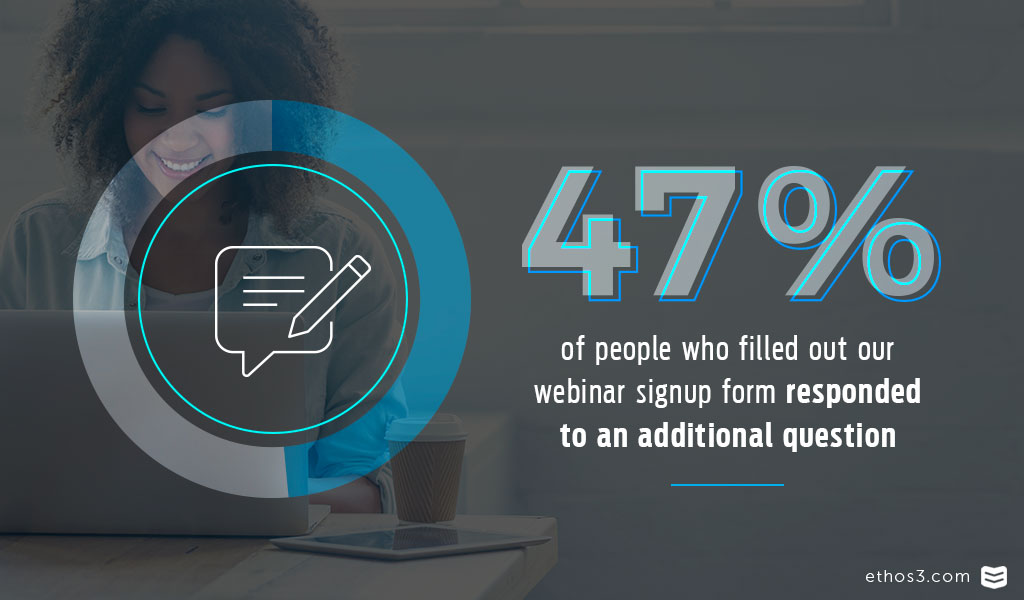As a marketer, I am constantly searching for ways to develop insight into the hearts and minds of my target audiences. What issues are they facing? How can my company alleviate and solve the issues? What does our typical client look like? What roles do they occupy, at what companies, in which industries? The questions to find answers to are numerous and ever-changing. Presentations allow marketers and speakers alike to initiate connections with audience members from beginning to end in ways that other marketing and engagement efforts do not permit.
Before the Presentation
Prior to taking the stage, presenters have several opportunities to engage with their target audiences and gather more data and useful information about them. Implementing a landing page with a signup form is an effective method for compiling a list of webinar or presentation attendees. Direct your target audiences to the form you create – whether it ends up living on a landing page or somewhere else within your company or organization website.
When creating the signup form, include a probing question that relates to the content you will cover in your presentation. The attempt to gain more insight into where your audience members are at on your topic will add a compelling layer to your material. Don’t worry. The added question won’t deter your target audiences. I recently created a landing page and corresponding form for a webinar event. I inserted a question which inquired about the registrants presentation strengths and weaknesses. Nearly 50% of people who filled out the form responded to the additional question. And we used the information to focus the webinar messaging.

During the Presentation
Throughout a slide deck, you can creatively obtain pertinent information about your target audiences. Produce an informal poll and kill two birds with one stone; interact with listeners at a deeper level and find out more about their pain points and solution expectations. The timeless Q&A session is another tool presenters should implement to learn more about their target audiences, as sparking meaningful discussion may encourage everyone to participate in a vulnerable and authentic manner. Finally, create a unique hashtag based off of your presentation content and tell your audience members to engage with you through it during the event. You’ll be able to follow individuals who use the hashtag following the conclusion of your speech.
After the Presentation
Your presentation is over. What could you possibly do now to get more of a scoop on your target audiences? Send a survey! If you kept track of their email addresses through an online form or even an old-fashioned paper and pen method, then you’ve got exactly what you need to ask for feedback on your presentation performance. In addition, send presentation attendees an extra content offering that you believe would be of special value to them. If you notice that your contacts aren’t responding well to a particular offering, conduct some A/B testing to determine which material works best after your public speaking appearance.
To discover more tips and tricks for pleasing your presentation audiences, review the following articles from our archives.
How to Make a Call to Action Like John Oliver
Why Audience Members Need to Have an Open Mind
Audiences, Listen for These Core Presentation Elements
